40 covalent and ionic bonds worksheet
Essential Question: How is ionic bonding different from covalent bonding? Comparison of Properties of Ionic and Covalent Compounds Because of the nature of ionic and covalent bonds, the materials produced by those bonds tend to have quite different macroscopic properties. The atoms of covalent materials are bound tightly to each other in stable
Bonding Worksheet #1: Introduction to Ionic Bonds. The forces that hold matter together are called chemical bonds. There are four major types of bonds. We need to learn in detail about these bonds and how they influence the properties of matter. The four major types of bonds are: I. Ionic Bonds III. Metallic Bonds. II. Covalent Bonds IV.
Naming Ionic Compounds Practice Worksheet Name the following ionic compounds: 1) NH 4 Cl _____ 2) Fe(NO 3) 3 ... Mixed Ionic/Covalent Compound Naming For each of the following questions, determine whether the compound is ionic or covalent and name it appropriately. 1) Na 2 CO
Covalent and ionic bonds worksheet
MCQ worksheet on Ionic bonds (with answer) – set 2. When metallic elements become ions they a. gain electrons. b. become positively charged. c. become negatively charged. d. two of the above; Which two elements could form an ionic compound? a. carbon and oxygen b. hydrogen and nitrogen c. lithium and fluorine d. boron and neon
Ionic & Covalent Compounds Worksheet Write formulas for the following compounds and classify as ionic (I) or covalent (C): lithium chloride I or C ammonium permanganate silver nitrate zinc hydroxide carbon disulfide iron(III) phosphate copper(I) iodide tin(IV) fluoride ...
Chapter 7 Practice Worksheet: Covalent Bonds and Molecular Structure 1) How are ionic bonds and covalent bonds different? Ionic bonds result from the transfer of electrons from one atom to another; Covalent bonds result from two atoms sharing electrons. 2) Describe the relationship between the length of a bond and the strength of that bond.
Covalent and ionic bonds worksheet.
Drawing covalent and ionic bonds worksheet This 2-worksheet product is designed for a typical high school/early high school unit on chemical bonds and introduces the following three skills: (1) drawing diagrams of ion connection diagrams; (2) drawing bond diagrams; and (3) writing chemical formulas for the resulting compounds.
Essential Question: How is ionic bonding different from covalent bonding? Comparison of Properties of Ionic and Covalent Compounds Because of the nature of ionic and covalent bonds, the materials produced by those bonds tend to have quite different macroscopic properties. The atoms of covalent materials are bound tightly to each other in stable
2. For each of the following covalent bonds: Write the symbols for each element. Draw a Lewis Dot structure for the valence shell of each element. Rearrange the electrons to pair up electrons from each atom. Draw circles to show the sharing of electrons between each pair of atoms. Draw the bond structure using chemical symbols and lines.
WORKSHEET: Chemical Bonding – Ionic & Covalent! REMEMBER… Ionic Bond between a Metal and Non-Metal (M + NM) Covalent Bond between a Non-Metal and Non-Metal (NM + NM) PART 1: Determine if the elements in the following compounds are metals or non-metals. Describe the type of bonding that occurs in the compound. Compound Element 1
To more directly compete with the open air Jeep CJ (available without doors and a top), in the late 1970s International Harvester introduced a roadster...
COVALENT COMPOUNDS Covalent compounds are made from two non-metals and so don’t follow the normal ionic rules. You can tell if a compound is covalent because it has prefixes modifying the species names. These species tell you exactly how many atoms are in the covalent compound. The prefixes are 1 = mono 2 = di 3 = tri
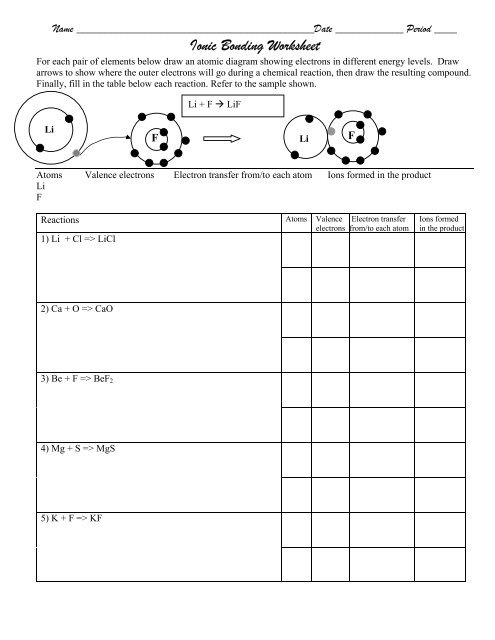
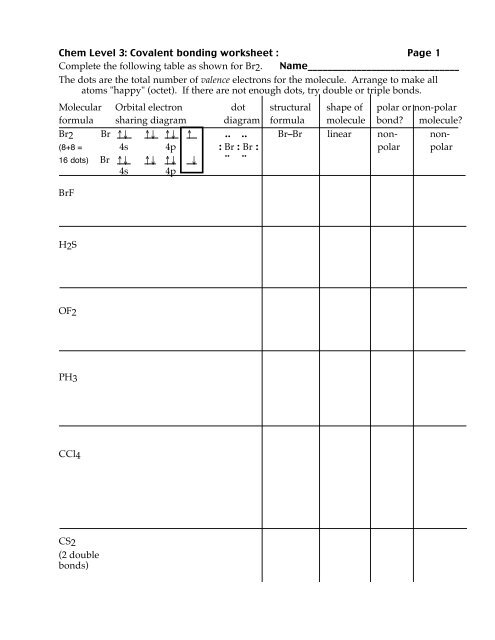

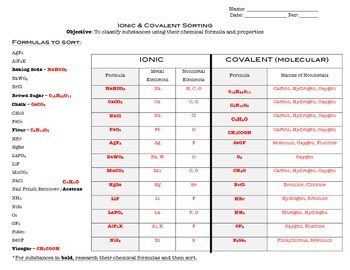
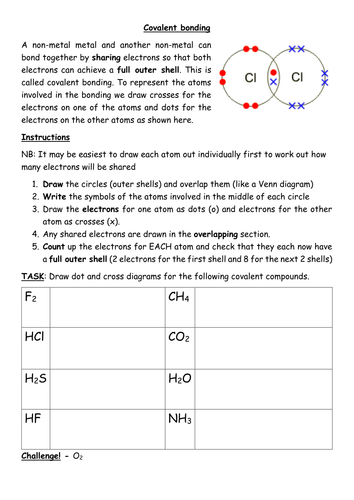



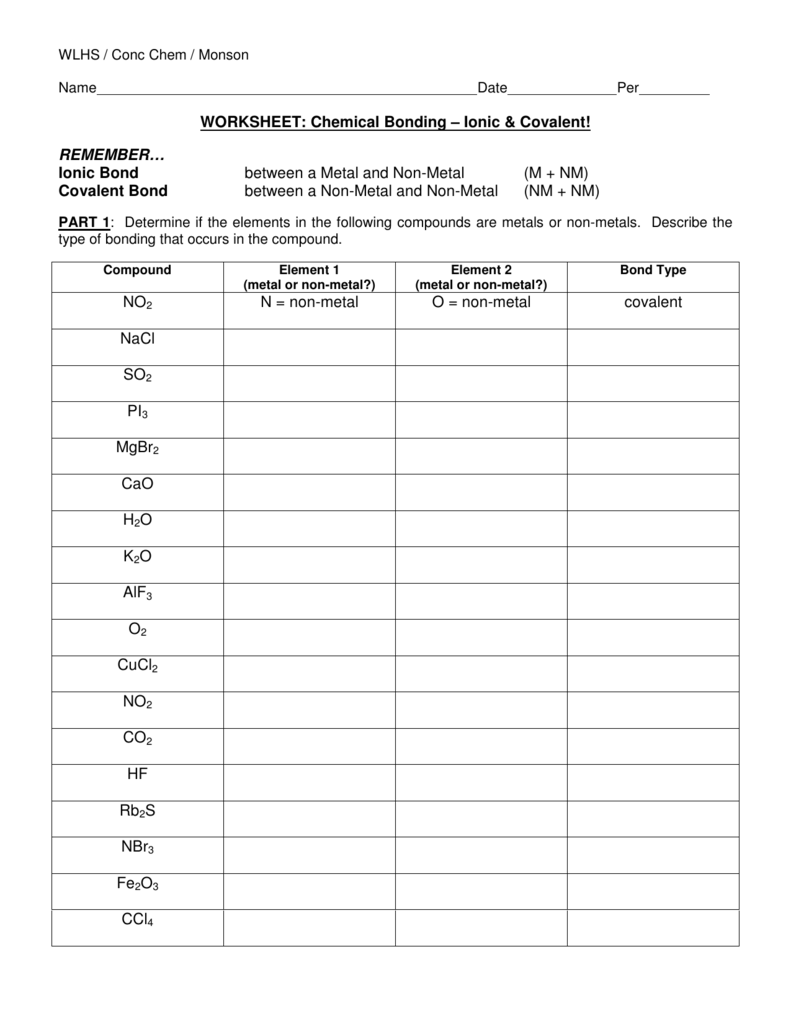
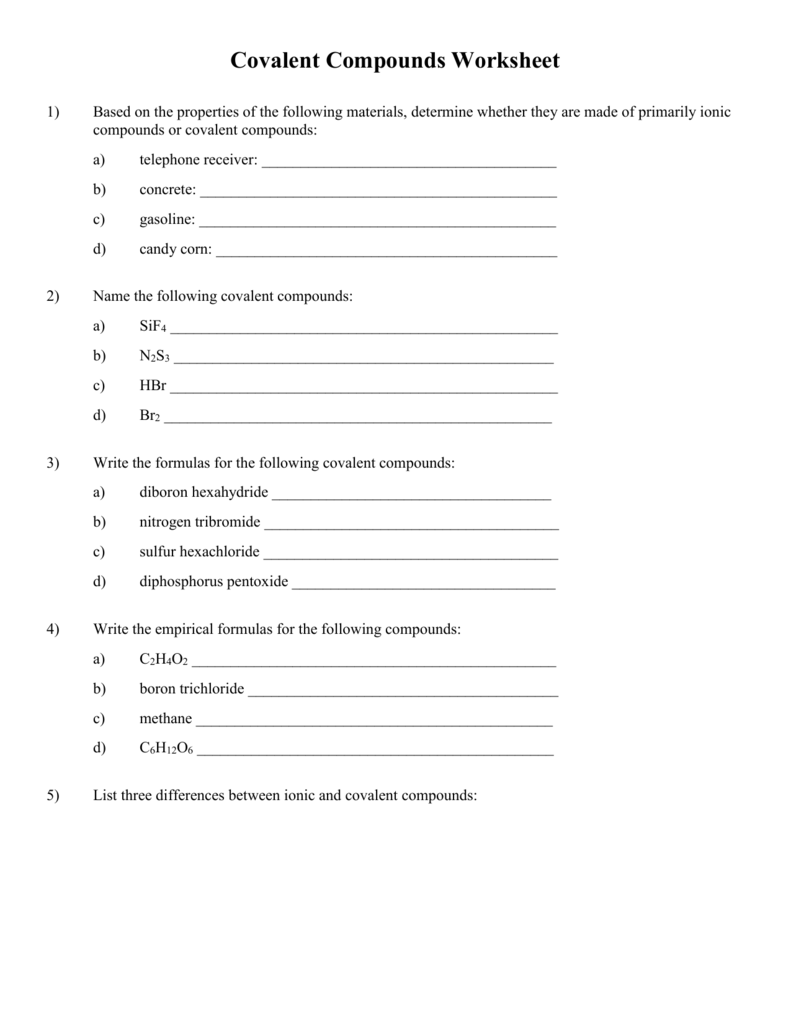
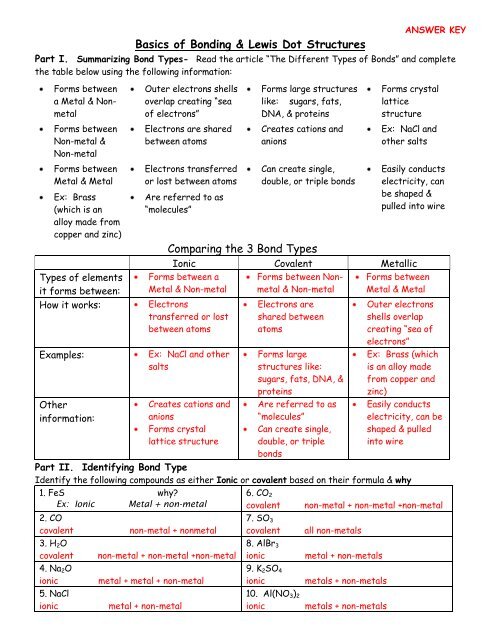
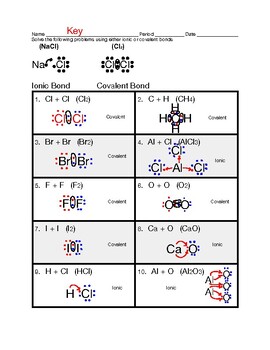


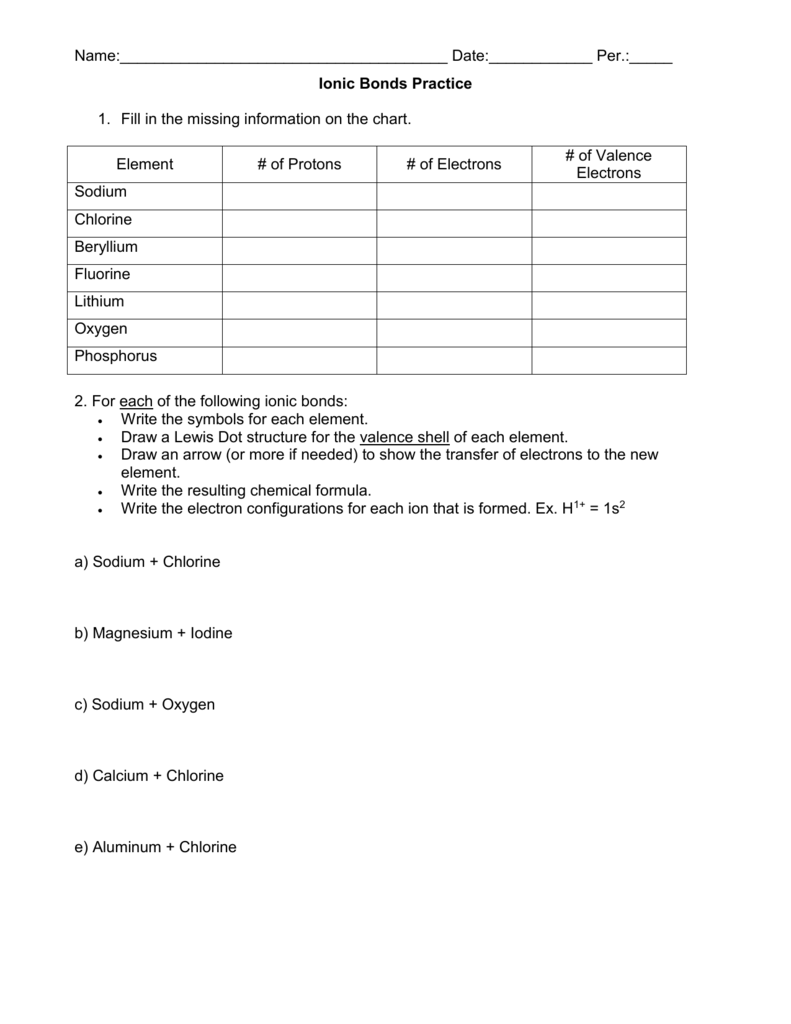

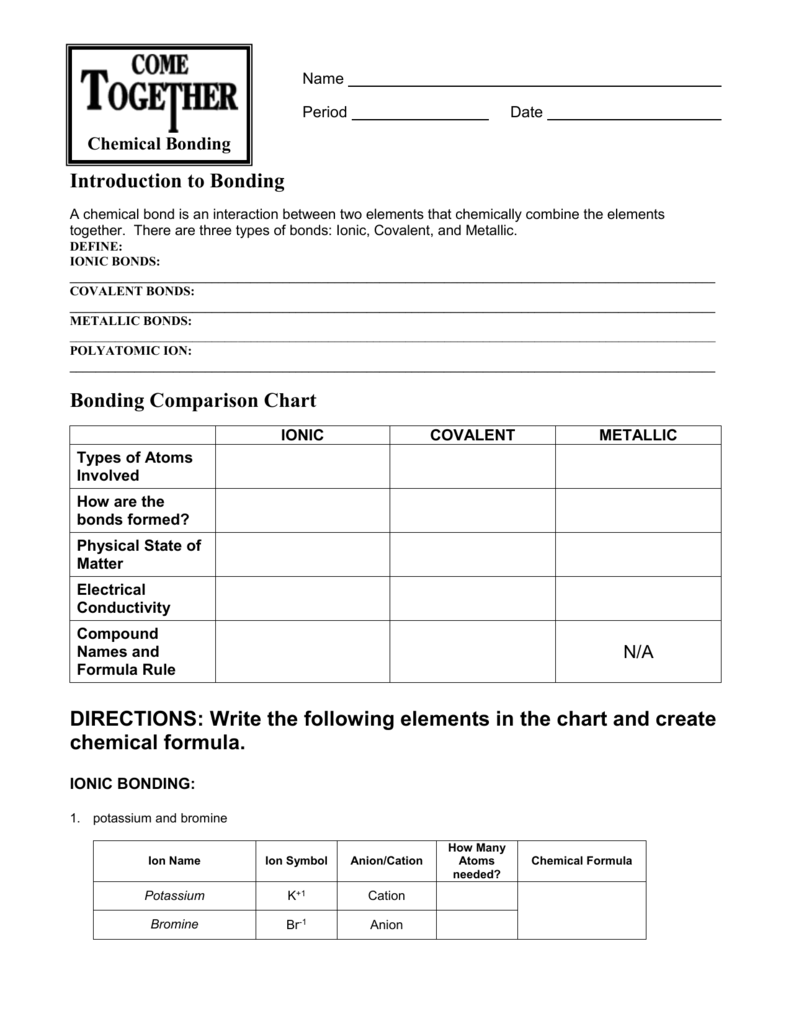

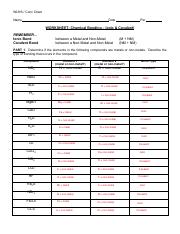
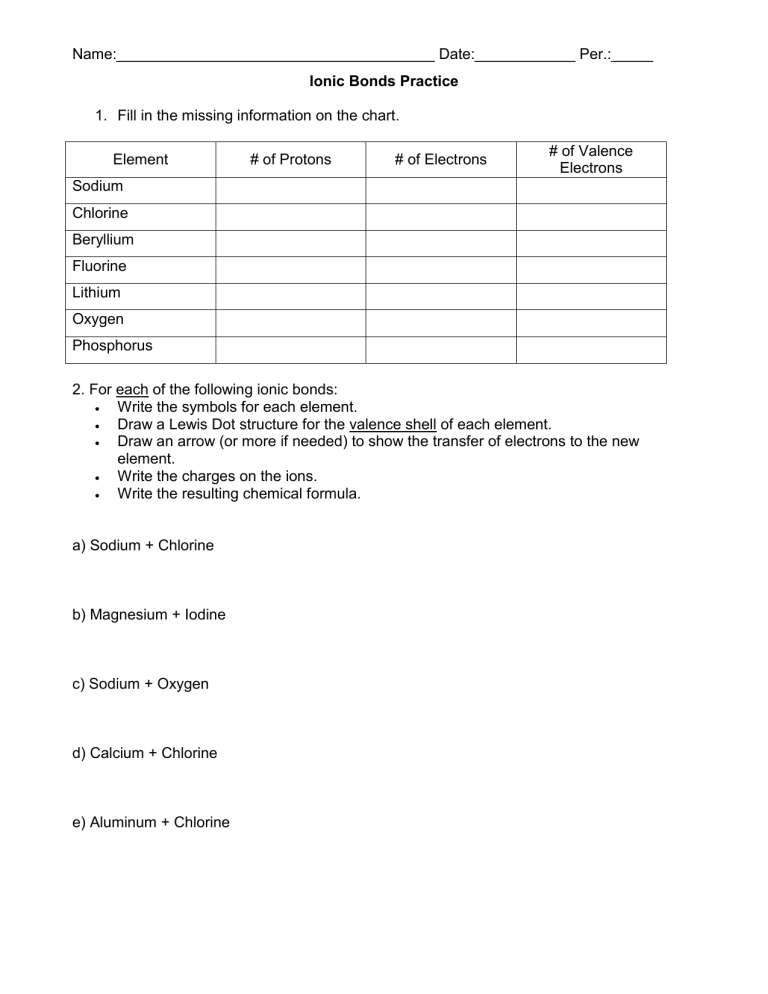
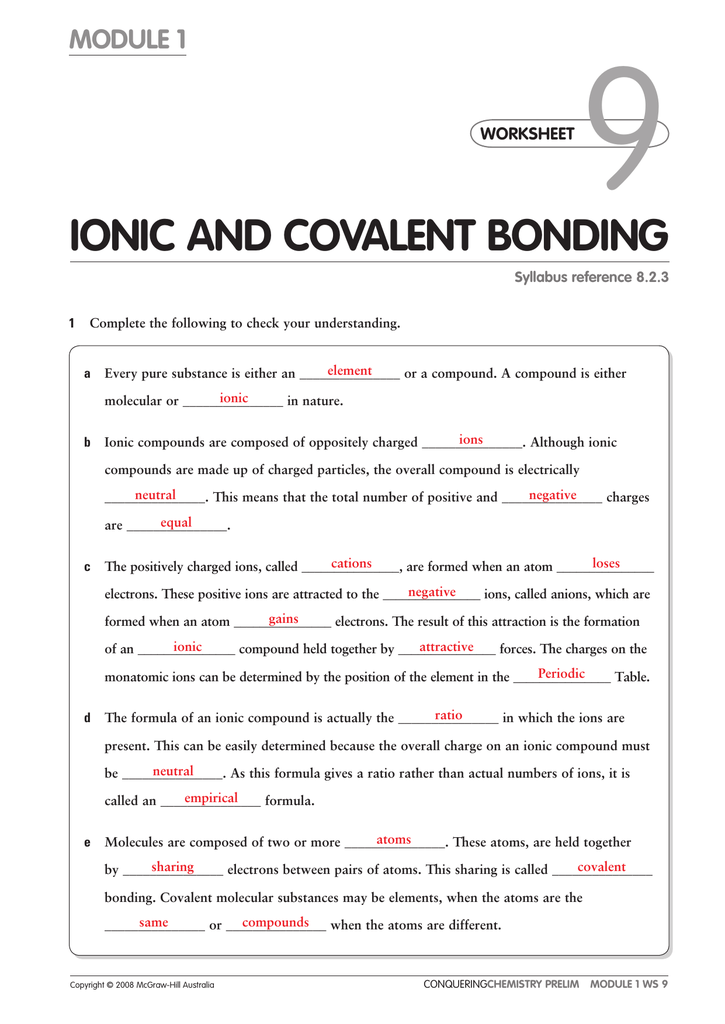
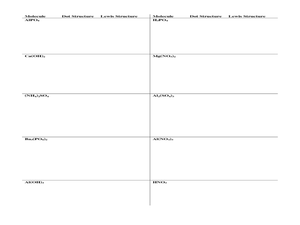
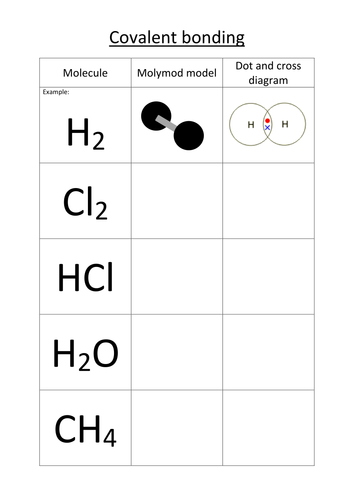
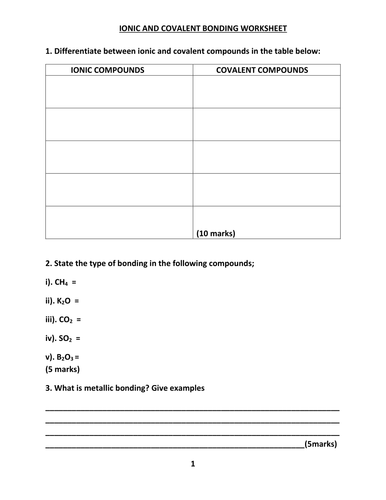


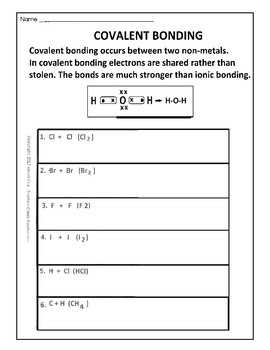
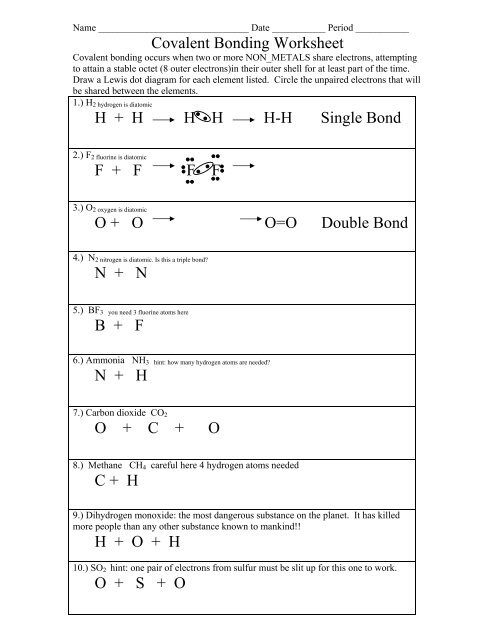

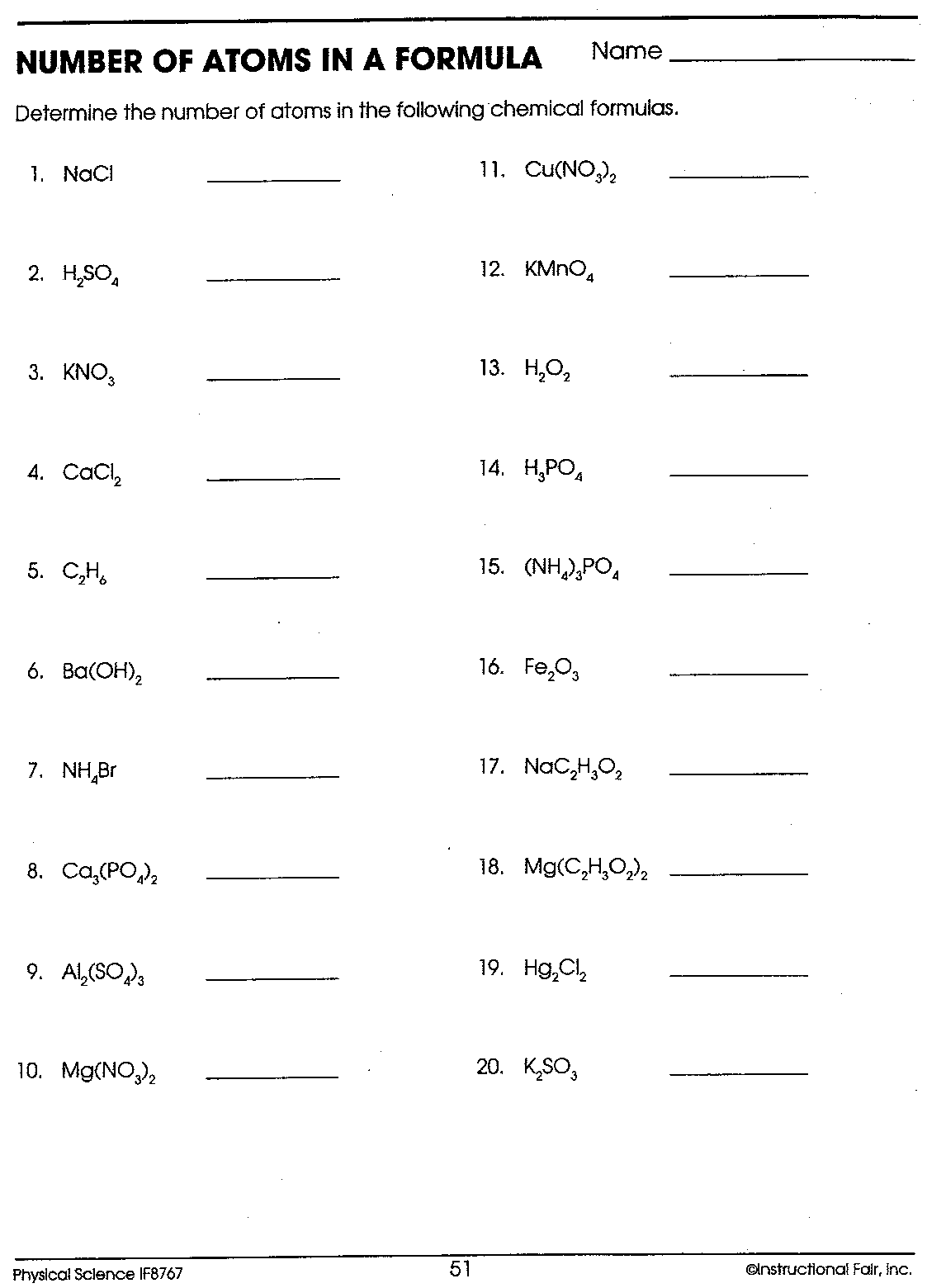
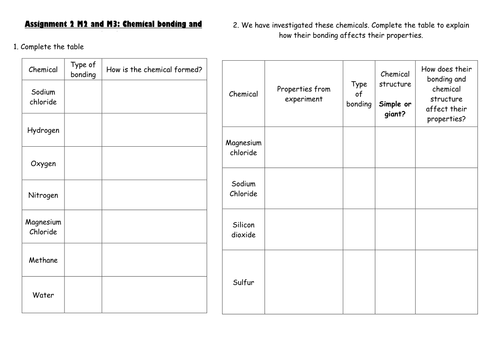

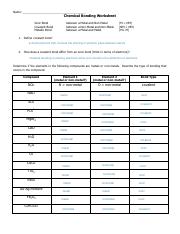

0 Response to "40 covalent and ionic bonds worksheet"
Post a Comment